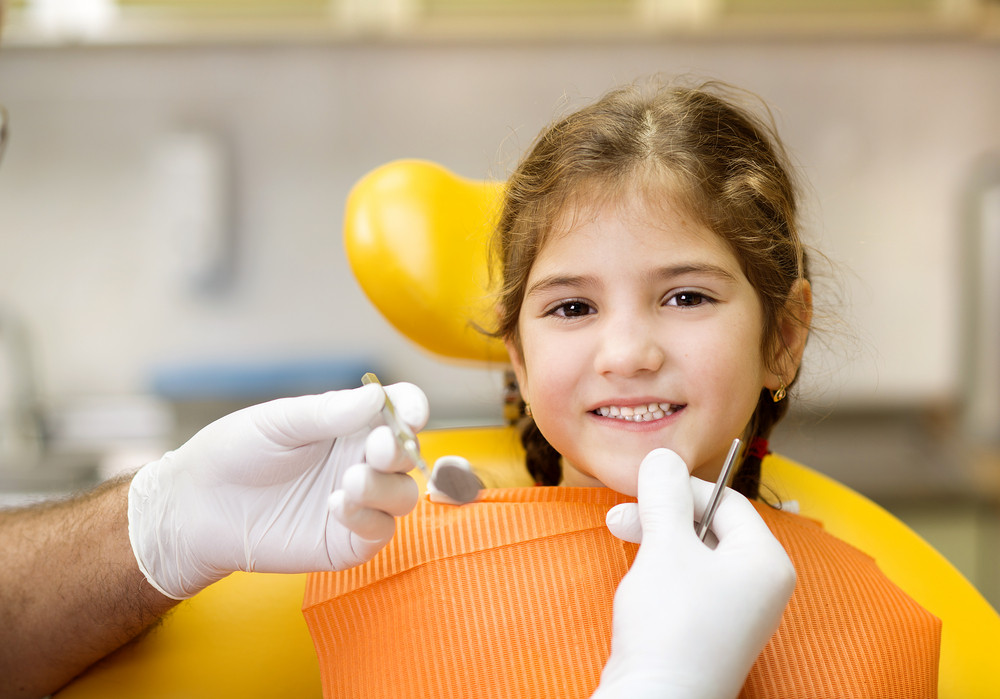Posted on June 24, 2020

As a parent, you want to see your child, or children, live a happy, healthy life. Keeping their teeth healthy is a step in the right direction when it comes to their overall health. Have you already considered taking your child to the dentist? When is the right time? Is there such a thing as being too young to slip into a dental chair? The answer is no. Children need to visit a dentist early, which in turn means your dentist may suggest they need to be checked by an orthodontist.
An orthodontist will be able to determine how to proceed with orthodontics that perfectly fit your child’s needs. Generally, the best time for a child to start orthodontic treatment is by the age of seven. The earlier tooth alignment corrections can be put in place the better. There are actually quite a few smile-correction options available for children including traditional metal braces. Having a child’s teeth corrected early with orthodontics gives them the benefit of having an improved appearance and higher self-esteem with a beautiful, straight smile.
Not many children are born with perfectly straight teeth. Luckily, orthodontics is an option for young children so they can get beautiful results from treatments such as braces. Over time, orthodontics has seen many advancements.
While Invisalign treatment is a great option, it tends to be better for adults whereas braces are better for young children. There are actually many options when it comes to braces that generate fabulous results. You can take your child to an Abilene orthodontist that offers personalized treatments for children and adults.
Show your child how having straight teeth is a good way to have good oral health by having your teeth straightened too.
The world of orthodontics includes various types of braces with the top choice for children being metal braces. It’s the diverse type of brackets that make braces ‘different’. The most durable and high-quality metal braces are stainless steel. They are more commonly used too.
The brackets, that are visibly bonded to each tooth, are all connected by an archwire. The wire guides teeth into straight positions over time. Today, metal braces are much smaller, more attractive, and comfortable when compared to braces from the past.
Have you ever heard of gold braces before? That’s right, gold braces are an option. They’re a fun option too when your child wants something different than the ever-popular stainless steel. Give them the chance to show their bright personality with gold braces that make having their teeth corrected a fun way to express themselves.
While Invisalign isn’t the first choice for kids, they can still get clear braces when they need to start with metal braces. The clear braces option is actually ceramic braces. Ceramic moves teeth just as well as their metal counterparts so teeth straightening happens in the same manner.
The brackets are clear so they are less noticeable and great choice for kids that don’t like the look of metal braces. Clear braces aren’t just for adult orthodontics.
The one question kids ask the most when they find out they need braces is, “How long do I have to wear braces?” The answer varies per patient and their specific teeth-straightening needs. Some treatments could take as little as six months, while other full orthodontic treatments take up to one to three years.
The more patients cooperate during treatment, keep up with appointments, wear rubber bands if needed, and avoid harmful foods the sooner treatments can end.
Technology has reduced the size of brackets for braces and made the process easier. Innovation has also made braces more efficient and less noticeable. Kids can choose the type of braces they want and the color of the ties used to hold the wire to the brackets. Once braces are applied, a constant, gentle pressure slowly moves crooked teeth into proper alignment.